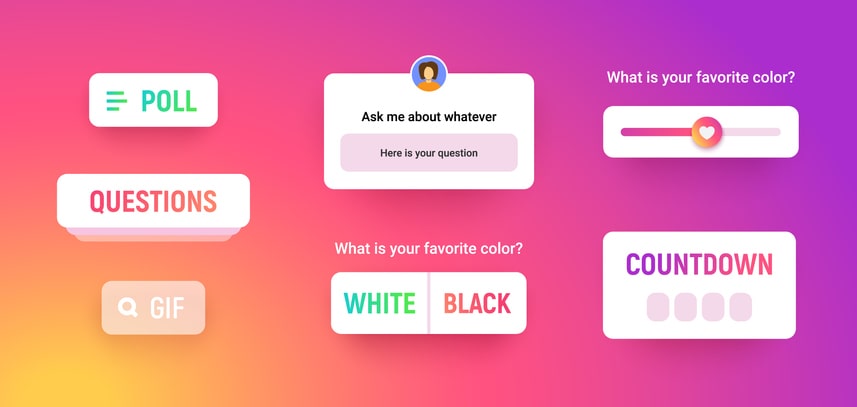Is Instagram Safe for Kids? (New Instagram Safety Features)

Today, social media platforms like Instagram are regularly used by kids and adults. Many parents are concerned about the potential harm the digital world can have on children’s mental health, body image, and well-being.
Social media platforms including Instagram, the third-most used social media app by children, are constantly updating their safety features to help protect children from inappropriate content and cyberbullying.
Instagram provides parents with a guide listing the various parental controls and safety features they can use to have more control over their children’s Instagram accounts and make Instagram safe for kids.
Related: 5 Ways Social Media Affects Kids’ Mental Health (And How Parents Can Help)
However, will the features be enough for parents to feel more comfortable with their children using the social media site? In this article, we will explore the new 2023 safety features to decide if more parental controls are needed and decide whether Instagram is safe for kids.
Is Instagram Safe for Kids?
According to Statista, Instagram has approximately one billion active monthly users in 2023, with the majority of users being aged between 13 and 24 – but is Instagram a kid-friendly platform?
Instagram allows people to connect globally making the potential Instagram risks to specifically teens and young adults very high. However, parents can make this social media platform safe by learning more about its potential risks and its new safety features.
What Are Instagram’s New Safety Features and Parental Controls?
Instagram provides several safety features to help support parents in keeping their children safe from the potential risks of Instagram. Some include:
Instagram’s Parent’s Guide and Family Center
Instagram’s parent company, Meta, has created a “Family Center”, which is a hub of safety tools that parents can use to see what their children are doing on Instagram and Meta’s other social media platforms. The Family Center and parent’s guide include an education hub with videos and tips for talking to teens about online safety and digital wellness as well as these features:
- Tools to allow parents to see their child’s screen time on the app and set time limits for screen time
- Receive updates about what accounts their child is following and who is following their child
- Receive notifications about apps and people their children have reported
- Teens can also see what information their parents have seen about them.
In an online post, Adam Mosseri, head of Instagram, commented on these features, saying:
“This is just one step on a longer path — our vision for Family Center is to eventually allow parents and guardians to help their teens manage experiences across Meta technologies, all from one central place.”
To supervise their teen’s Instagram, parents must be at least 18 years old and their teen must be between 13 and 17 years old. The parent and teen must both accept a supervision invitation for this to be possible.
Here are some of the latest safety features and parental control features Instagram has created to ensure the safety of its users.

Age-Verification Process
Although kids need to be 13 to have an Instagram account, many young people in the past have found ways to get around this. Kids would lie about their age and be able to get a private account in a matter of seconds. That was due to a lack of an age verification process.
However, Tech Crunch states that Instagram recently has created an age-verification process, and it is now available in many countries. Users must verify their age using one of three methods: uploading an ID, taking a video selfie, or asking mutual friends to confirm their age.
Two-Factor Authentication
Users can make their Instagram safer by activating the two-factor authentication feature. This would require a user to verify that it is he/she who is trying to access the account by receiving a login code via phone or using a security app like Google Authenticator.
Account Privacy
A user can set his/her account private. In a private account, only followers would be able to see the content.
Removal of Third-Party Apps and Websites
Users can remove Instagram’s access to third-party apps and websites to help protect their information.
Protection of DMs
Users over the age of 19 can no longer send direct messages to teens who aren’t following them. This would help protect teens from being exposed to unwanted content and prevent identity theft and phishing.
Text-Only DMs
Users can now send text-only message requests to those who do not follow them. Once they accept the message request and initiate conversation, then images and videos are allowed.
Restrict Feature
Users can restrict a certain account. This means the user and his/her followers will not see any comment or direct message made by the restricted account.
“Take a Break” Feature
There is also a “take a break” feature for young Instagram users. This encourages users to step away after they’ve been scrolling for a certain amount of time. Although it won’t kick them off the app, it may serve as a reminder that they’ve been on it for too long.
Daily Time Limit
This feature includes giving parents the power to put a limit on screen time. Your child will receive a notification to close the app when he/she reaches the daily limit. This would mean no Instagram when your teen has #insomnia and #can'tsleep.
Hidden Words Feature
Instagram now allows users to use the hidden words feature to automatically filter out negative comments and direct messages.
Quiet Mode Feature
It is hard to turn off your phone when busy because Instagram is addictive. However, users can now set their Instagram accounts into quiet mode when they are busy. In quiet mode, Instagram would mute notifications and send auto-replies to DMs to help prevent distractions.
Potential Dangers of Instagram for Kids
Even with these safety features, Instagram comes with many potential risks that can harm children. These risks include cyberbullying, exposure to inappropriate and sensitive content, addiction, negative effects on mental health, exposure to unrealistic body image standards, and safety risks.
1. Cyberbullying
Children and teens tend to bully one another in person. However, with social media platforms, bullying has now become popular online. Children can easily cyberbully one another on Instagram via hateful comments and posting images of one another.
Thanks to Instagram’s algorithms, those images can go viral quickly. This has led to an increase in depression, anxiety, and suicide among children.
2. Exposure to Inappropriate and Sensitive Content
Instagram and other social media may expose children to inappropriate, sensitive, or offensive content. The National Institutes of Medicine (NIH) states that being exposed to inappropriate content can increase risks for inappropriate behavior in children. Social media platforms have introduced many safety features to hide unwanted content; however, not all the content can be controlled yet.

3. Instagram Addiction
According to Lee Health, children can get very addicted to Instagram, especially when they receive likes and positive comments on their posts. That is because our bodies release dopamine every time we receive positive feedback. Dopamine is known as the “feel-good” chemical and is very addictive.
4. Negative Effects on Mental Health and Well-Being
According to the Child Mind Institute, depression among children and teens has increased drastically in the last few years. Research suggests that this drastic increase is a result of increased exposure to social media. Children who connect with others online and spend a lot of time on screens tend to become more isolated, harming their mental health and well-being.
Also, the images posted on Instagram send false messages to children, especially to females. The need to always be perfect and the constant comparison between individuals emotionally harm children’s self-esteem.
5. Unrealistic Body Image Standards
Instagram is based on image-based content. Many of those images represent harsh body image standards encouraging being thin and indirectly encouraging children to develop eating disorders.
Instagram fitness influencers and lifestyle influencers with no educational background in nutrition or fitness training regularly create Instagram posts portraying disordered eating patterns that may confuse children.
Instagram's “What I Eat in a Day” content and “My Fitness Routine” posts can be misleading or dangerous. Following social media diets is particularly dangerous to kids who are still growing or experiencing puberty! Children who follow these accounts may believe they are eating healthy when in fact they are not.
Educate Kids on Instagram Scams and Safety Risks
Instagram presents not just potential threats to mental and physical well-being, but also to the safety of children.
Instagram Scams and Stealing of Personal Data
Personal data is gathered on social media. Scammers and hackers are constantly looking for victims, especially children, to steal personal information from. Identity theft is one of the main challenges Instagram poses.
Fake profiles are constantly being created on Instagram. Scammers can steal personal data and impersonate anyone they want to harm his/her reputation. Instagram hackers can access an Instagram account by stealing someone’s password and account information.
These social media scams usually happen by using third-party apps or phishing, a cybercrime in which an individual impersonates a legitimate institution to trick someone into giving personal information. They usually do this to sell personal information to other criminals.
Safety Issues with Instagram Messenging (DMs) and Instagram Stories
Instagram allows users to interact with one another and send messages to anyone in the world via DMs. This means that children can interact with strangers who may have harmful intentions. Strangers may gain access to children’s private data by using different techniques.
- They may send romantic messages to try to build a romantic relationship with the victim.
- They may send links to get victims to click on them. Once the victim clicks the link, malware that steals private data will be downloaded on the victim’s phone.
- They may send a good deal to get your credit card or bank information. For example, they may send a message that if you pay 100 dollars, you will get two thousand followers in a couple of days.
Instagram posts and stories also come with risks. Users can tag other users, including children, in their stories and posts. Anyone who sees that post can click on the tagged user’s name to view his/her profile. Fortunately, there are now features that can prevent users from tagging one another in irrelevant content.
Does Instagram Need More Safety Features for Kids?
Instagram has previously mentioned launching more safety features to protect underage children online. Some potential Instagram safety features to look out for in the future include:
Shared Parental Accounts to Monitor Activity
When it comes to privacy settings, Instagram plans on implementing a setting that would allow more than one parent to co-supervise their teen’s account because we all know two sets of eyes are better than one.
Instagram for Kids Under 13?
Instagram had previously mentioned that they are planning to create an Instagram platform for children under the age of 13. However, according to NPR, Instagram has paused that plan to solve concerns about exposure to sensitive and inappropriate content.
Many parents believe that Instagram is a little late to the party. A few years ago, TikTok created a separate platform “TikTok for Younger Users” which restricts messages and comments. YouTube also has a separate platform, YouTube Kids, for users under 13.
5 Tips to Keep Your Kids Safe on Instagram
- Parents should talk to their children about the use of social media and its potential risks.
- Parents should use all the parental control features available on Instagram.
- Kids should always have private accounts. Public accounts come with many risks.
- Children should never have unlimited screen time. Parents must set a time limit for social media use and make sure their children have no screen time at least an hour before bedtime.
- Parents should frequently check their children’s Instagram accounts and block anyone who may be a potential threat.
The Bottom Line: Is Instagram Safe for Kids?
Parents must decide for themselves if Instagram is safe for their kids, and if they’re comfortable with their children using Instagram. Instagram’s new safety features give parents more options to control their children’s private accounts. However, there will always be potential risks with social media apps.
Instagram and other social media platforms face safety concerns and challenges every day; however, they continue to work on improving their apps. It is the parent’s responsibility to stay up-to-date with the new safety features and parental controls to ensure their children’s safety.
The best way to protect children from the risks of Instagram, TikTok, Facebook, and other social media platforms is by being open with children and having regular conversations about internet safety.
For more tips on keeping your kids safe on social media, check out our 4 Social Media Safety Tips for Kids Parents Need to Know.

